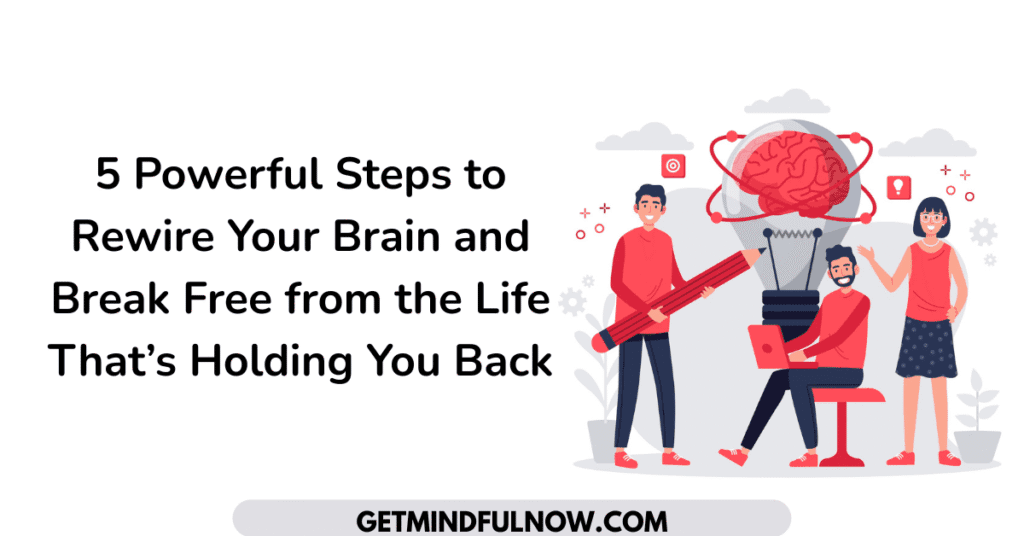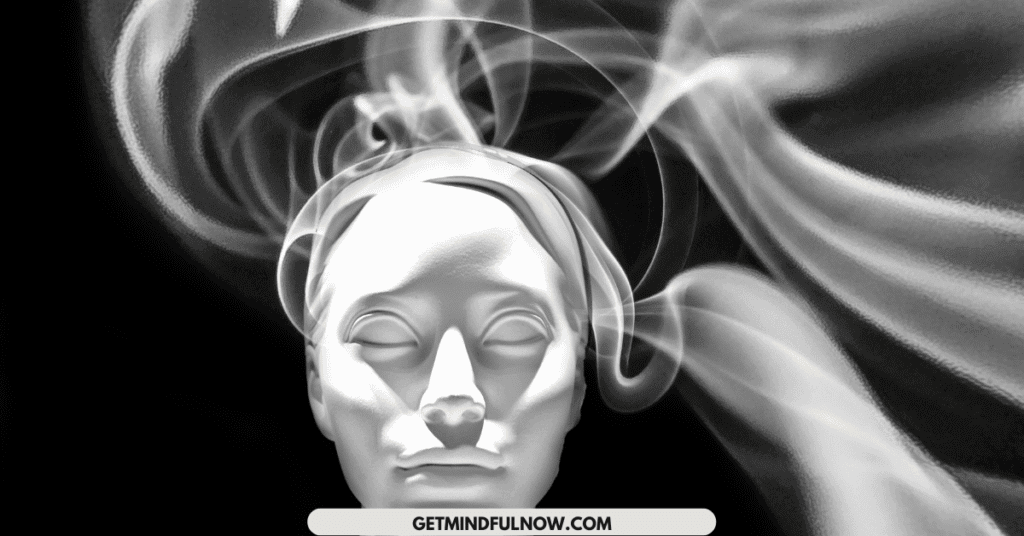Let’s start with something you’ve probably felt but never had the science for: that strange emptiness that shows up no matter how much you achieve, the shadow that creeps in even after you’ve ticked many goals off your list. It’s that restless feeling of being “on” all the time, not in a good way, but in a can’t-breathe-deeply, waiting-for-the-other-shoe-to-drop way. Your shoulders are tight. Your heart races when an email from boss pings. You can’t remember where you put your phone because your mind is juggling too many what-ifs. You call it busy life. Science calls it survival mode.
Here’s the truth nobody told you: survival mode is an incredible short-term hero… and a slow, methodical villain when it overstays its welcome.
The brain’s emergency takeover
When you’re in danger, real danger, your brain doesn’t politely ask for permission to react. It slams the emergency button. The amygdala, your built-in threat detector, hijacks the control tower. Your adrenal glands release adrenaline, the hormone that speeds up your heart, sharpens your senses, and gets your muscles ready to move. Right behind it comes cortisol, the stress hormone that keeps energy flowing to help you handle the threat. In seconds, your body is now a finely tuned escape vehicle.
For a few minutes, this is genius. You’re sharper. Faster. You could dodge a falling tree or run from a growling dog without thinking. The problem? Modern life rarely throws us wild animals to escape from. Instead, we mobilize the same stress hormones to survive a boss who’s breathing down our neck, a deadline that feels like a guillotine, or that toxic family member who gets on our nerves the moment they walk in the room. The amygdala doesn’t care if the threat is a charging dog or a charging email, it treats them exactly the same.
What happens when the emergency never ends
Survival mode was built for bursts, not for the 24/7 reality of modern life. It’s like driving a car in first gear on the freeway, it works for a while, but push it long enough and something will break down. No organism was designed to stay in high alert mode forever. A cat that sprints away from a dog doesn’t sit around replaying the chase or adding emotional drama to retell to other cats, it simply comes back to normal. We don’t. We replay, we re-feel, and we keep our systems revved like the danger never ended. Here’s how:
- Amygdala dominance: Your brain is constantly scanning for threats, even when you’re safe. That jumpy, on-edge feeling? That’s your amygdala working overtime, which is why even the color someone else is wearing can irritate you, the tone they’re speaking in feels like an attack, and half your friendships are quietly built on swapping the same complaints.
- Frontal lobe suppression: The part of your brain responsible for logic, creativity, planning, and emotional regulation goes quiet. Your ability to see options, imagine possibilities, and problem-solve collapses. That’s why when someone like me says life is beautiful, you flip open the news of rape, murder, and chaos to prove otherwise, not because you want to be negative, but because your brain isn’t in the mood to think optimistic.
- Hippocampus shrinkage: The memory center of your brain takes a hit, making it harder to learn from past experiences or remember important details, which is why you keep forgetting to walk the other way and end up smashing your toenail on the same table leg over and over.
Over time, this rewiring makes you more reactive, less rational, and more likely to keep living in the very state that’s damaging you.
Your body keeps the score
When the brain stays in survival mode, the body takes orders as if you’re still in danger. Cortisol stays elevated. The immune system gets downgraded so your body can conserve energy for “escape.” Digestion slows down because who needs to absorb nutrients when you might get eaten? (Spoiler: you do.)
This isn’t harmless. Chronic survival mode:
- Weakens immunity, making you more vulnerable to illness, which is why you might find yourself catching a cold right before a big meeting or special event, as if your body decides to wave the white flag when you most need it strong.
- Increases inflammation, a root cause of many chronic diseases, like how your skin suddenly flares up with acne or eczema.
- Disrupts sleep cycles, which further impairs brain function.
- Damages the gut-brain axis, affecting mood, energy, and overall health.
Why we get stuck here
You’d think no one would want to feel stressed all the time. But survival mode can become addictive. The surge of adrenaline and cortisol feels like fuel, it tricks you into thinking you’re alive, productive, and in control. Your body starts craving it like a cup of coffee you can’t skip. Without realizing it, you start seeking out conflict, drama, or pressure just to get that chemical hit. You work better under panic, you feel restless when things are calm, and silence makes you uneasy. Before long, your identity wraps around “being busy,” “pushing through,” or “always on the go,” because without the rush, you don’t quite know who you are.
It’s not just a mental habit, it’s a full brain-body feedback loop. The more you live in survival, the more your brain wires itself to stay there.
The slow theft of your potential
This is the part that hurts: while survival mode keeps you alive, it also robs you of the very things that make life worth living. Creativity. Joy. The ability to dream and build a future. It’s like living in a house where all the windows are boarded up, you’re safe from danger, but you can’t see the sunlight or the view outside. In survival, your brain cares only about now, and only in terms of avoiding pain, not in terms of creating meaning, love, or memories.
You stop imagining what could be. You lose the capacity to grow into the person you want to be. Your beliefs harden, tilting toward the negative, and you can’t access the higher thinking that solves problems without burning you out.

Stepping out of the loop
Escaping chronic survival mode isn’t about quitting your job, or leaving your hometown, and moving to a cabin (unless you want to). It’s about training your brain and body to recognize safety again.
Here’s where to start:
- Breathe like you’re safe: Slow, deep breathing tells your nervous system it can relax. Try 4-7-8 breathing before bed.
- Catch the hijack: Notice when you’re reacting from fear rather than fact. Pause before acting.
- Activate the frontal lobe: Do activities that require planning, creativity, or focus, journaling, learning something new, trying a different route to a familiar place, or picking up a skill you’ve never tried before. even cooking a recipe without shortcuts.
- Practice present-moment awareness: Meditation, mindful walking, or simply noticing sensory details, like the smell of your coffee, the feel of the sun on your face, or the sound of your own breath, can gently pull your brain out of threat mode and remind your body it’s safe now.
- Don’t distract yourself when deep emotions resurface: stop instantly grabbing your phone or finding a distraction when a deep, uncomfortable emotion surfaces. Those emotions are reflections of your shadow. They show you what still needs work, and avoiding them means avoiding your own healing.
Final thoughts
Survival mode will save your life when you need it. But if you let it run the show forever, it will quietly dismantle your mind, body, and future. The good news? The same brain that got you stuck here can rewire itself for safety, creativity, and growth.
You don’t have to live braced for impact. You can retrain your brain to believe in safe ground, and that’s when real change begins.
If this hit close to home, this is exactly the work I do with people one-on-one, walking them out of survival mode and into a life where their brain works for them, not against them. You can book a session on my homepage. And if you’re ready for more insights like this, subscribe to my newsletter and follow me on Threads for daily brain-shifting ideas.








